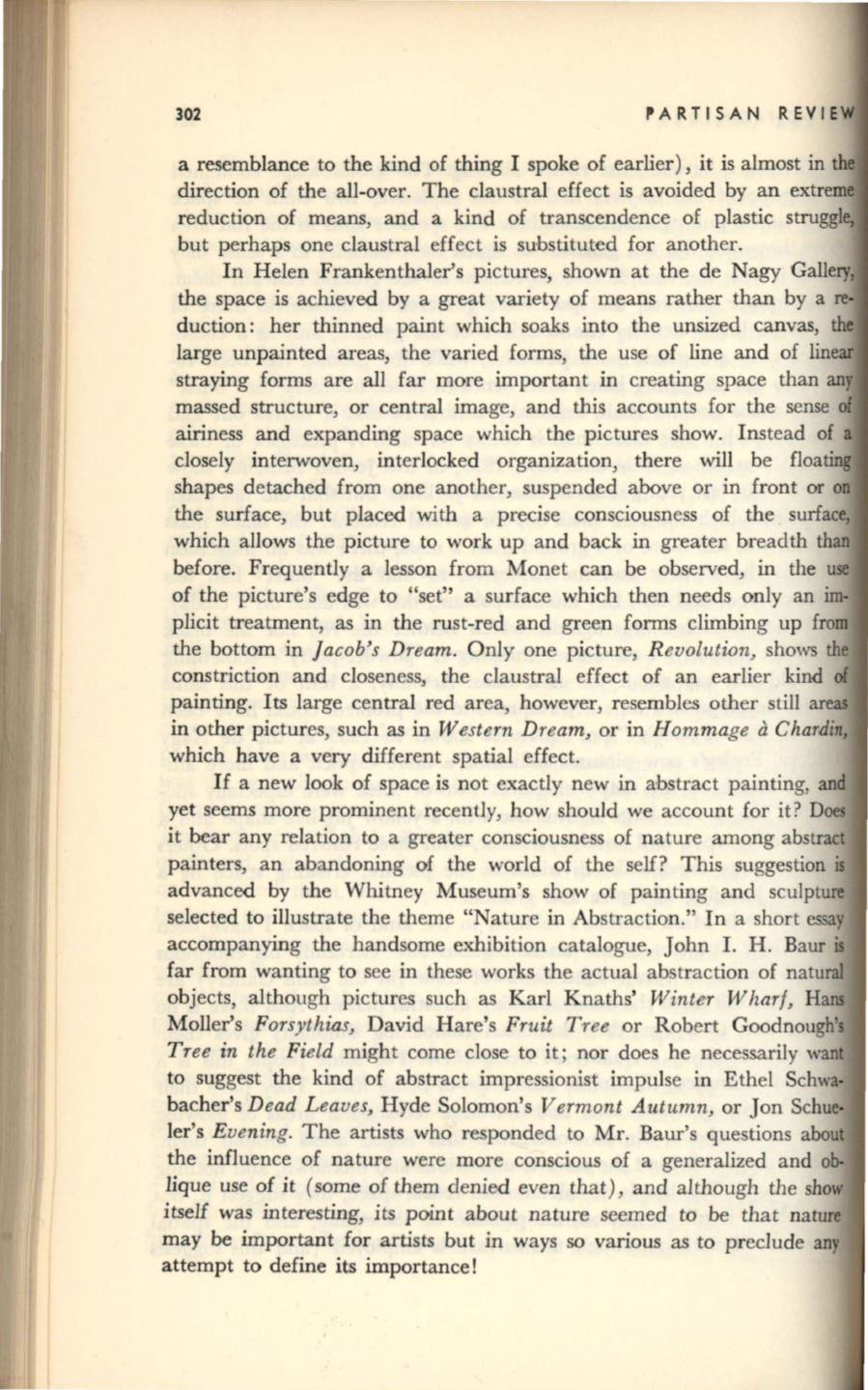
302
,.ARTISAN REVIEW
a resemblance to the kind of thing I spoke of earlier), it is almost in th
direction of the all-over. The claustral effect is avoided by an extreme
reduction of means, and a kind of transcendence of plastic struggle,
but perhaps one claustral effect is substituted for another.
In Helen Frankenthaler's pictures, shown at the de Nagy Gallery,
the space is achieved. by a great variety of means rather than by a
reo
duction: her thinned paint which soaks into the unsized canvas, the
large unpainted areas, the varied forms, the use of line and of linear
straying forms are all far more important in creating space than
any
massed structure, or central image, and this accounts for the sense
of
airiness and expanding space which the pictures show. Instead of a
closely interwoven, interlocked organization, there will be floating
shapes detached from one another, suspended above or in front or on
the surface, but placed. with a precise consciousness of the surface,
which allows the picture to work up and back in greater breadth than
before. Frequently a lesson from Monet can be observed, in the use
of the picture's edge to "set" a surface which then needs only an
im·
plicit treatment, as in the rust-red and green forms climbing up from
the bottom in
Jacob's Dream.
Only one picture,
R evolution,
shows the
constriction and closeness, the claustral effect of an earlier kind
of
painting. Its large central red area, however, resembles other still
areas
in other pictures, such as in
Western Dream,
or in
Hommage
a
Chardin,
which have a very different spatial effect.
If
a new look of space is not exactly new in abstract painting, and
yet seems more prominent recently, how should we account for it? Does
it bear any relation to a greater consciousness of nature among abstract
painters, an abandoning of the world of the self? This suggestion
is
advanced. by the Whitney Museum's show of painting and sculpture
selected to illustrate the theme "Nature in Abstraction." In a short essay
accompanying the handsome exhibition catalogue, John
I.
H. Baur
is
far from wanting to see in these works the actual abstraction of natural
objects, although pictures such as Karl Knaths'
Winter W hart,
Hans
Moller's
Forsythias,
David Hare's
Fruit Tree
or Robert Goodnough's
Tree in the Field
might come close to it; nor does he necessarily want
to suggest the kind of abstract impressionist impulse in Ethel Schwa·
bacher's
Dead Leaves,
Hyde Solomon's
Vermont Autumn,
or Jon Schue–
ler's
Evening.
The artists who responded to Mr. Baur's questions about
the influence of nature were more conscious of a generalized and ob–
lique use of it (some of them denied even that), and although the show
itself
was interesting, its point about nature seemed to
be
that nature
may be important for artists but in ways so various as to preclude any
attempt to define its importance!


